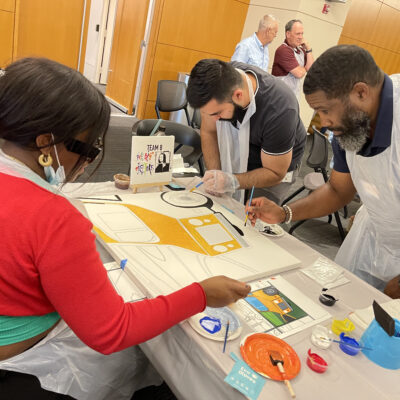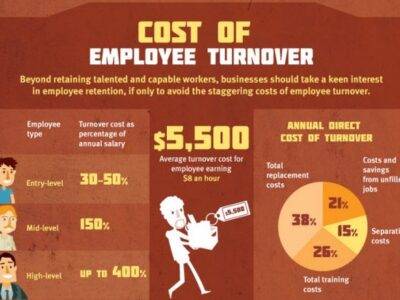Complacency in the workplace isn’t just a productivity killer—it’s a silent epidemic that drains creativity, morale, and innovation.
Imagine walking into your office on a Monday morning and feeling like you’re just repeating last week. The same tasks, the same faces, and the same uninspired atmosphere greet you day after day.
Anyone who’s ever experienced this knows it’s an awful feeling.
Workplace complacency occurs for various reasons, ranging from understimulation to a company emerging from a stressful period of crisis.
In this guide, we’ll explore what demotivates employees, common causes of workplace complacency, and expert tips on how to motivate unmotivated employees.
com·pla·cen·cy
noun: complacency; noun: complacence
- A feeling of smug or uncritical satisfaction with oneself or one’s achievements.
“The figures are better, but there are no grounds for complacency”
smugness, self-satisfaction, self-congratulation, self-regard.
What Is Complacency in the Workplace?
Complacency in the workplace is a dangerous state that can hinder growth, innovation, and productivity. It’s not just corporate complacency, either—there’s also individual complacency and entitlement.
Individual complacency at work can have many sources and causes:
- Absence of a significant or visible crisis
- An abundance of visible resources
- Low overall performance standards
- Narrow functional goals for each employee
- Poor KPIs
- Lack of sufficient performance feedback (internally and externally)
- Low-confrontation culture
- Positive messaging that’s out of line with reality
- Employee burnout, overwhelm, and excessive stress
- Boreout Syndrome and resenteeism
We’ll stop here, as this list is already long, but it could certainly keep going! Since every employee and team is unique, there are countless causes of complacency at work.
If you’ve noticed any of these signs from your team members, it’s time to address the issue before it gets out of control.
Risks of Unchecked Complacency in the Workplace
When boredom, complacency, entitlement, and lack of motivation at work go unchecked, you’re setting your company (and employees) up for failure. Here are just some of the many risks:
- Decreased productivity
- Lower employee engagement
- Mental health challenges
- Physical health issues
- Increased employee turnover rate
- Decreased employee retention
- Employee resentment
- High stress levels, burnout, and boreout
But wait, weren’t some of these on the list of causes? Yes, they were.
This is because complacency in the workplace creates a vicious cycle that can be hard to disrupt. If your employees become complacent due to high stress or burnout, that complacency can then lead to higher stress levels and more burnout, and so on.
What Is Boreout Syndrome?
You may have noticed that “boreout” popped up on both lists, but since this is a relatively fresh buzzword, not everyone is familiar with it.
Boreout is what happens when employees are consistently bored and under-engaged with their day-to-day work. It’s the boredom version of burnout. Here’s the difference:
- Boreout: The result of being under-engaged and doing too little at work.
- Burnout: The result of being overly stressed and doing too much at work.
Signs of boredom and boreout at work may include:
- Procrastination
- Low productivity
- Long breaks
- Absenteeism
- Lack of participation in meetings
- Negative attitude
- Isolation
If you’ve noticed any of these signs in your team members, it’s time to take action. The same goes for any of the signs and potential causes we highlighted earlier in this section.

Start By Addressing the Sources of Workplace Complacency
Addressing the sources of complacency in the workplace as quickly as possible is a crucial first step. It’ll help you overcome this issue and ensure employees meet their full potential on every project.
Here are some ways leaders and companies can help to break complacent habits and inspire employees to strive for excellence:
- Setting high performance standards
- Providing clear and meaningful feedback and recognition
- Promoting a culture of open communication
Remember, every workplace is unique.
Your company culture might call for a change to address workplace complacency. It all comes down to the root of the issue, the signs your team members are displaying, and what they need to reengage.
How To Identify Complacency in the Workplace
We’ve already covered what complacency is alongside common causes and signs. But, how do you really identify it in the workplace?
How do you determine if there’s complacency among your team members?
It’s all about knowing what to look for before evaluating your workplace to check for the telltale signs.
Note: If you already feel certain that your employees are exhibiting signs of complacency in the workplace, feel free to skip this section and move on to our eight steps below.
Know What To Look For
We’ll start by taking a closer look at some examples of complacency to help you identify if this is an issue at your workplace.
Here are 10 things that employees are more likely to do:
- Become Disengaged: Complacent employees may show signs of a lack of interest or enthusiasm in their work, becoming passive or disinterested.
- Stop Thinking: Employees may stop using their critical thinking skills and accept the status quo without questioning or seeking innovative solutions.
- Stop Taking Initiative: Employees may avoid taking initiative or going above and beyond their assigned tasks, instead settling for doing the bare minimum amount of work.
- Avoid Investing in Themselves: Employees may resist attending training programs, participating in team building programs, acquiring new skills, or seeking growth opportunities.
- Neglect Their Personal Brand: Employees experiencing complacency and entitlement may no longer focus on building a positive image or showcasing their skills and accomplishments to team members.
- Take Shortcuts: Complacent employees may choose shortcuts or take the path of least resistance, even if it compromises the quality of their work.
- Stop Taking Risks: Employees may be unwilling to step outside their comfort zones and explore new possibilities or ventures.
- Lose Their Passion: Complacent employees may lose their drive and become apathetic towards their work and the company.
- Become Disgruntled with Their Position: Unhappy employees are one of the biggest corporate culture killers an organization can have. Feeling stagnant leads to high turnover.
- Lose Hope for a Brighter Future: Complacency in the workplace erodes optimism and hope, making it unlikely that the employee will see a bright future at your company (or any company).
Again, all of these factors add up to decreased innovation, trust, loyalty, and psychological safety.
If turnover is on the rise, excitement is dwindling, and your numbers are dropping, complacency may already have a strong hold on your team.
Be Realistic & Don’t Confuse Busyness With Productivity
It’s important to keep a grounded and realistic view of your team during this evaluation. The most common issue is assuming everyone is being productive, so all must be well.
Ask yourself: Are you and your team being proactive or just reacting?
Just as actual productivity doesn’t mean constant busyness, having a full schedule doesn’t always mean you’re productive. In fact, packed calendars can make everything feel urgent and hurt productivity.
“True urgency focuses on critical issues. It is driven by the deep determination to win, not anxiety about losing. Many people confuse it with false urgency. This misguided sense of urgency does have energized action, but it has a frantic aspect to it with people driven by anxiety and fear. This dysfunctional orientation prevents people from exploiting opportunities and addressing real issues.” – John P. Kotter
Urgency comes from having a bigger purpose aimed at making good things happen. Handling emergencies is just reacting to daily crises. False urgency causes stress and can harm our health if it happens too often.

8 Steps To Overcome Workplace Complacency
Don’t fret if you see signs of complacency among your teams! All is not lost. It’s time to problem-solve.
There are many ways to re-engage your team. Just remember to be aware of pitfalls. Over 70% of all major transformation efforts fail because organizations do not take a holistic approach—they throw money at a problem in a one-off effort and fix nothing.
Don’t let that be your company.
Enter Kotter’s 8-Step Process for Leading Change. Think of these steps as a series of interconnected solutions to complacency at work.
1. Create a Sense of Urgency
Make people understand why change is needed right now, but urgency is key.
As a leader, you can create a sense of urgency by showing your team the situation’s potential threats and opportunities. This helps motivate employees to put in the effort needed for change.
It also keeps them in the loop with what you’re trying to do, which can provide a reality check and be motivating all on its own.
2. Build a Guiding Coalition
Form a group of influential and respected people who are each committed to driving change. This team should have the power and credibility to lead the effort, and they’ll set an example for the rest of your employees.
This team can also help track progress and keep everyone aware of the issue long-term so that this effort doesn’t fall by the wayside.
3. Form a Strategic Vision & Initiative
Develop a clear vision of what your company’s future looks like after the change and then create a strategy to get there. This vision will guide everyone’s efforts and give them a common goal—make sure it includes your team members!
4. Enlist a Volunteer Army
Get a large group of people involved and excited about the changes that need to happen.
The more people you get on board, the better the chances of success! Look for members of your volunteer army across multiple teams and departments to secure a company-wide effort.
5. Enable Action by Removing Barriers
Identify and eliminate obstacles preventing people from making the changes you want to see. In other words, do something about the causes!
This might include updating old processes, fostering healthier attitudes, or creating new structures to clear the way for positive change.
6. Generate Short-Term Wins
Create some quick, small successes to build momentum for your team and help them feel accomplished. This is a crucial step in building successful teams.
Why? These wins allow people to see that the change is working and encourage them to keep going. It can be as easy as breaking the preliminary steps for your initiative into smaller steps and celebrating each win.
7. Sustain Acceleration
Use the momentum from those early wins to tackle bigger challenges. Keep pushing and making improvements, building on the success of each milestone.
When you accomplish one set of milestones, it’s time to move on to the next thing to sustain that acceleration. Never stop moving forward!
8. Institute Change
Make the changes stick by embedding them into your company culture. Ensure that the new ways of working are maintained by continually highlighting the connections between the new behaviors and the organization’s success.
And remember, reward your teams for their success and do this regularly! If you want them to stay excited, you’ll need to keep things exciting.
4 More Ways To Address Complacency in the Workplace
There is a wealth of solutions to complacency. It’s all about picking the right ones and implementing them.
We suggest a holistic, multi-faceted approach that includes things like organizational change, updating company culture, implementing team building, and changing things up in the workplace. Here are some more ways to do that:
1. Gamify Workplace Tasks
Repetitive tasks can quickly lead to boredom and a sense of complacency. After all, doing the same thing all day, every day gets monotonous and boring FAST.
One way to deal with this is through gamification in the workplace.
Adding an element of fun and gamification to repetitive tasks can help keep them fresh and exciting while motivating employees to complete them.
2. Conduct Leadership Training
Ineffective management and leadership can quickly lead to complacency and entitlement among employees. It’s management’s job to ensure employees are engaged and motivated in the workplace.
Thankfully, managers are also in a position to solve the problem. Karrie Brazaski pointed this out on a podcast episode about employee burnout, saying,
“Leadership sets the culture, and culture can really impact the way in which people operate within an organization.”
Leadership training, such as Team Leadership DNA, can be an effective way to improve management and decrease boredom at work.
3. Prioritize Professional Development
Lack of career growth can also lead to disengaged and unmotivated employees. They might feel stuck where they are with no room or path to grow, and when this happens, they can end up complacent, bored, and disengaged.
One solution is prioritizing professional development and growth. Professional development programs can be a great way to prioritize employee development and help employees grow personally and professionally.
You can also focus on intradepartmental projects, which can help employees learn new skills that encourage them to grow.
4. Encourage Teamwork
Humans are social, and we want to work with others. Collaborating helps keep us engaged, motivated, and satisfied at work—without it, isolation, boredom, complacency, and more become commonplace.
So, encourage more teamwork! Having employees or teams work together can get them more social, motivated, and ultimately less bored.
Things like interdepartmental projects and TeamBonding programs like Team Synergy offer great ways to encourage teamwork and decrease workplace complacency.
How Can Team Building Halt Complacency in the Workplace?
If you’ve noticed signs of complacency among your team, this is a significant issue, and there are no quick fixes.
The good news is that there are many tools you can use to solve the problem, and team building is one of the best options.
Team building activities and events play a vital role in overcoming complacency in modern workplaces. They can actively address almost every cause and symptom we listed earlier in the article.
They’re also effective with on-site, remote, and hybrid teams. Here are some of the many proven benefits of regular team building activities:
- Foster a culture of collaboration
- Enhance employee engagement
- Promote open communication
- Encourage healthy competition
- Develop trust and camaraderie
- Encourage risk-taking and creativity
- Reinforce organizational goals and values
When you bring your team together outside of the typical work environment, you’re giving them time to do things like:
- Unwind and relax
- Bond with each other and form workplace friendships
- Discover hidden talents and build new skills
- Improve communication with colleagues
- Learn more about company goals and values
Of course, the specific benefits depend on the events you’re hosting, but if you’re engaging in a range of team building activities throughout the year, you’ll get them all! And your team will thank you for it (trust us).
Ready To Take a Stand Against Complacency in the Workplace?
If your organization is facing complacency among personnel, it’s time for positive change within your workplace culture.
Create an environment that strives for continuous improvement and empowers employees to pave the way for their own success.
Understanding what complacency at work looks like and how to overcome it is one of the most important things today’s leaders can do. It’s all about creating a healthier workplace environment that keeps your team members motivated and productive.
The best part? It’s never too late to start!
At TeamBonding, we’ve been helping companies improve team recognition for 25+ years. We have a wide range of events that can help you build a better, stronger, and more connected team.
Find the best ways to recognize and motivate your team—get in touch with us today!














